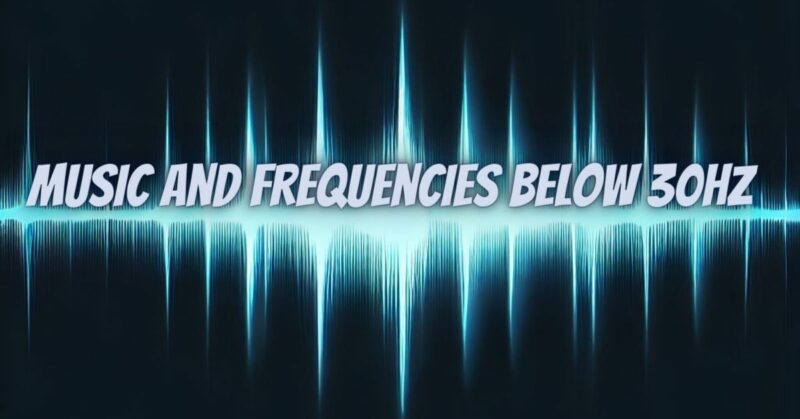Music is a universal language that transcends cultural boundaries, connecting people through sound and emotion. While we often associate music with melodies, harmonies, and rhythms that fall within the audible range of human hearing, there is a fascinating world of frequencies below 30Hz that plays a crucial role in shaping our musical experiences. In this article, we will delve into the realm of subsonic frequencies, exploring their significance in music, their physical properties, and their impact on both the artistic and technical aspects of music production.
Understanding Subsonic Frequencies
Subsonic frequencies, often referred to as infrasound, are sound waves with frequencies below the threshold of human hearing, typically below 20Hz. These low-frequency vibrations are not perceived as distinct tones or pitches but rather as a sensation or a physical presence. In nature, subsonic frequencies can be generated by seismic activity, ocean waves, or thunderstorms, and they are responsible for the eerie and unsettling feelings often associated with haunted places.
In music, subsonic frequencies are intentionally introduced to add depth, power, and physicality to the listening experience. Although inaudible to the human ear, they are felt as vibrations in the body and can profoundly influence the emotional impact of a piece of music.
The Role of Subsonic Frequencies in Music
- Emotional Depth: Subsonic frequencies can enhance the emotional impact of music by creating a sense of weight and power. In genres like electronic dance music (EDM) and hip-hop, sub-bass frequencies are a defining element, driving the energy of the music and intensifying emotional responses in listeners.
- Physical Sensation: When subsonic frequencies are felt as vibrations in the body, they can create a visceral and immersive experience at live concerts or in well-designed home audio systems. This physical aspect of music can be particularly impactful in genres like dubstep or experimental electronic music.
- Cinematic Soundtracks: In film and video game soundtracks, subsonic frequencies are used to enhance suspense and tension. These frequencies are often associated with ominous or otherworldly elements, adding a layer of subliminal unease to the auditory experience.
Technical Considerations in Music Production
- Speaker and Subwoofer Design: To reproduce subsonic frequencies accurately, high-quality subwoofers and speaker systems are essential. These components are designed to handle the immense power and low frequencies associated with sub-bass, ensuring that the music is not only heard but also felt.
- Equalization (EQ): Sound engineers use equalization techniques to boost or attenuate specific frequency ranges, including subsonic frequencies. Careful EQ adjustments can help balance the low-end of a mix, ensuring that sub-bass frequencies don’t overpower the rest of the music.
- Compression and Limiting: Compression and limiting are used to control the dynamic range of sub-bass frequencies, preventing them from causing distortion or damage to audio equipment while maintaining a consistent and impactful presence in the mix.
The Artistic Exploration of Subsonic Frequencies
- Genre Variation: Different music genres leverage subsonic frequencies in unique ways. From the earth-shaking bass drops in dubstep to the subtle rumble of a double bass in classical music, subsonic frequencies contribute to the sonic identity of each genre.
- Experimental Soundscapes: Avant-garde musicians and sound artists often push the boundaries of subsonic frequencies, using them to create experimental and immersive sonic environments that challenge traditional notions of music.
Subsonic frequencies, while imperceptible to the human ear, are an integral part of the musical experience. They add depth, power, and emotional resonance to music, creating an immersive and visceral connection between the listener and the sound. From the technical considerations of audio equipment to the artistic exploration of new sonic frontiers, subsonic frequencies continue to shape the evolving landscape of music, demonstrating that music is not only heard but also felt in ways that transcend the audible realm.


